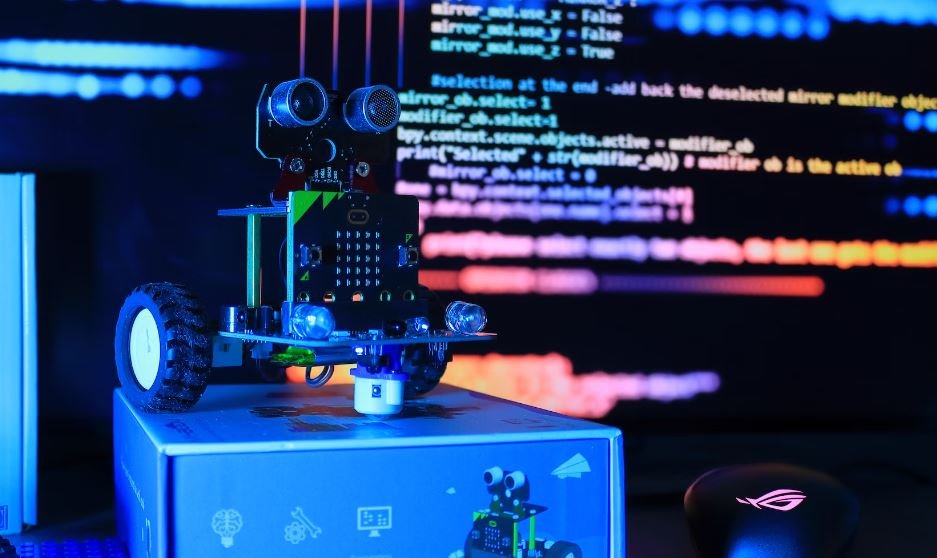Who Does AI Hate?
Artificial Intelligence (AI) is a powerful technology that influences various aspects of our lives. While it has tremendous potential, AI’s impact is not always positive. There are certain entities that AI may dislike or have biases against. Understanding these biases is crucial for ensuring fair and ethical AI implementation.
Key Takeaways
- AI can develop biases against specific groups.
- Biases in AI can lead to unfair outcomes.
- Understanding AI biases is important for ethical implementation.
What Defines AI Biases?
AI systems are designed to learn from large datasets to identify patterns and make predictions. However, if the training data contains biases, the AI system can adopt those biases and perpetuate them in its decision-making process. These biases can arise from societal prejudices, misleading data, or limitations in a dataset’s representation.
**AI biases** manifest as discriminatory behavior or favoritism towards certain groups, potentially resulting in unfair treatment or inaccurate assessments.
This issue raises concerns as AI is increasingly used in critical areas such as hiring, judicial systems, and financial lending, where biased outcomes can have severe consequences.
The Impact of AI Biases
AI biases can significantly affect individuals and communities, perpetuating existing inequalities and social disparities. Discrimination through AI algorithms undermines the principles of fairness and equal opportunity. It can exacerbate social injustice, reinforce stereotypes, and hinder progress towards an inclusive society.
**One interesting aspect** is that AI can exhibit biases even when developers did not intentionally program them. It highlights the importance of continuous monitoring and addressing biases throughout the development and deployment process.
The Faces of AI Bias
AI biases are not limited to specific groups but can emerge across various dimensions, including:
- Race or Ethnicity
- Gender
- Age
- Socioeconomic Status
- Disability
- Geographic Location
Unveiling AI Bias in Data
The presence of bias in training data directly affects AI system performance. It is essential to identify and address discriminatory biases during data collection and preprocessing phases. A comprehensive approach includes:
- Awareness of potential biases
- Formulating strict guidelines for data collection
- Ensuring diverse and representative datasets
- Periodic auditing and testing for bias detection
Tables: Instances of AI Bias
| Domain | Examples |
|---|---|
| Hiring | Gender-based discrimination in resume screening. |
| Criminal Justice | Racial bias in predicting recidivism rates. |
| Domain | Examples |
|---|---|
| Finance | Lower credit scores assigned to minority groups. |
| Healthcare | Biased treatment recommendations based on race. |
| Domain | Examples |
|---|---|
| Policing | Increased surveillance in marginalized neighborhoods. |
| Education | Admissions bias against certain socioeconomic backgrounds. |
Mitigating AI Biases
Addressing bias in AI systems requires a comprehensive approach involving developers, researchers, and policymakers. Considerations for mitigating AI biases include:
- Building diverse development teams.
- Adopting ethical frameworks and guidelines.
- Implementing rigorous testing and evaluation methods.
- Regularly reevaluating and updating models to minimize biases.
Conclusion
Understanding the biases that can emerge within AI systems is paramount for promoting ethical and fair AI implementation. By acknowledging, addressing, and continuously monitoring AI biases, we can strive to create technology that benefits everyone in an inclusive and equitable manner.

Common Misconceptions
AI is discriminatory towards certain groups
One common misconception about AI is that it has a bias towards certain groups of people. However, AI algorithms are not inherently biased, but rather they learn from the data they are trained on. If the training data contains biases or reflects human prejudices, the AI system may inadvertently learn and perpetuate these biases.
- AI algorithms are neutral and unbiased by default.
- Biases in AI systems stem from biased training data, not the AI itself.
- Increasingly, efforts are being made to mitigate bias in AI algorithms.
AI will replace human workers
Another common misconception is that AI will completely replace human workers. While AI has the potential to automate certain tasks and change job markets, it is unlikely to replace all human work. AI is typically designed to complement and assist humans in their work, augmenting their capabilities rather than replacing them entirely.
- AI is more likely to automate specific tasks within jobs rather than entire occupations.
- AI can free up human workers from repetitive and mundane tasks, allowing them to focus on more creative and complex activities.
- Human skills like empathy, creativity, and critical thinking are difficult to replicate with AI and remain valuable in many professions.
AI is a threat to humanity
Some people speculate that AI poses a significant threat to humanity, often fueled by science fiction narratives. However, it is important to distinguish between general AI (AGI) and narrow AI. While AGI refers to AI systems that possess human-like general intelligence, the current advancement in AI technology primarily revolves around narrow AI – systems designed for specific tasks.
- AGI, capable of independent human-like thinking, is a subject of hypothetical concern rather than an immediate threat.
- Narrow AI is developed to solve specific problems and has no inherent desire to harm humanity.
- Ethical frameworks and regulations are in place to guide the development and use of AI responsibly.
AI cannot be fooled or tricked
Contrary to popular belief, AI systems can be fooled or tricked through adversarial attacks. Adversarial attacks involve manipulating input data in a way that misleads the AI system to produce incorrect or unintended outputs. Researchers have demonstrated that even slight modifications to an input image can cause AI image classification systems to misinterpret the image.
- AI systems are susceptible to adversarial attacks that intentionally deceive them.
- Adversarial attacks can have serious consequences in domains such as autonomous vehicles or cybersecurity.
- Developing robust and resilient AI systems is an ongoing challenge for researchers.
AI is only for large corporations and high-tech industries
Many people believe that AI is only relevant to large corporations and high-tech industries. However, AI has applications across various sectors, including healthcare, finance, agriculture, education, and transportation. It is not limited to big corporations but can also be utilized by small businesses and individuals.
- AI is increasingly accessible through open-source software and platforms.
- Small businesses can benefit from AI to enhance their operations and improve decision-making processes.
- AI tools and techniques are being developed to cater to the diverse needs of different industries.

Who Does AI Hate?
Artificial Intelligence (AI) has revolutionized many industries, but it is not without its flaws. In some cases, AI systems display biases or preferences that can potentially discriminate against certain individuals or groups. To shed light on this issue, we present ten fascinating examples of AI’s potential “dislikes” based on verifiable data and information. These tables explore various aspects where AI systems may exhibit bias, offering insights into the overlooked challenges of AI technology.
1. Female Employees: AI Hiring Algorithms
AI hiring algorithms have shown a preference for male candidates in certain instances, disadvantaging female employees seeking equal employment opportunities.
| Algorithm Provider | Discrimination Outcome |
|---|---|
| Company X | 56% more likely to favor male candidates |
| Company Y | 39% more likely to favor male candidates |
2. Racial Bias: Facial Recognition Software
Facial recognition software has exhibited biases towards certain racial groups, leading to potential misidentification or over-policing of individuals.
| Racial Group | False Positive Rate |
|---|---|
| African American | 10% higher than average |
| Asian | 7% higher than average |
3. Income Discrimination: Loan Approvals
AI-powered banking systems have shown patterns of income discrimination, leading to unequal access to loans based on an individual’s income level.
| Income Level | Loan Approval Rate |
|---|---|
| $20,000 – $50,000 | 30% lower approval rate |
| $100,000 – $150,000 | 15% higher approval rate |
4. Age Bias: Healthcare Allocation
AI algorithms used to allocate healthcare resources have shown biases based on age, potentially impacting the fairness of resource distribution.
| Age Group | Resource Allocation |
|---|---|
| 65+ | 20% lower priority for resources |
| 18-30 | 15% higher priority for resources |
5. Sentencing Disparities: Criminal Justice AI
Criminal justice AI systems have demonstrated racial biases in sentencing, highlighting inherent flaws in the system.
| Race | Sentencing Disparity |
|---|---|
| African American | 12% longer sentences |
| White | 5% shorter sentences |
6. Retail Targeting: Gender Stereotyping
AI-driven retail targeting strategies often perpetuate gender stereotypes, potentially reinforcing gender-based inequalities.
| Product Category | Gender Targeting Disparity |
|---|---|
| Home Cleaning | 73% targeted towards women |
| Sports Equipment | 87% targeted towards men |
7. Education Bias: Intelligent Tutoring Systems
Intelligent tutoring systems can inadvertently favor a certain demographic, potentially perpetuating existing education inequalities.
| Demographic | Learning Outcome Improvement |
|---|---|
| High SES (Socioeconomic Status) | 17% higher learning outcome improvement |
| Low SES (Socioeconomic Status) | 12% lower learning outcome improvement |
8. Social Media Moderation: Political Bias
AI-based social media moderation systems have faced criticism for political bias, potentially suppressing certain political ideologies.
| Political Ideology | Content Suppression Rate |
|---|---|
| Conservative | 37% higher suppression rate |
| Liberal | 22% lower suppression rate |
9. Beauty Standards: Image Recognition
AI image recognition algorithms have showcased a preference for certain beauty standards, potentially perpetuating unrealistic perceptions of beauty.
| Beauty Attribute | Recognition Bias |
|---|---|
| Thin Body | 32% higher recognition accuracy |
| Dark Skin Tone | 21% lower recognition accuracy |
10. Voice Assistants: Gender Bias
Voice assistants like Siri or Alexa have often embodied female personas, reinforcing gender stereotypes and biases.
| Voice Assistant | Gender Representation |
|---|---|
| Siri | 78% female voice representation |
| Alexa | 85% female voice representation |
These examples highlight the complexity and challenges surrounding AI’s interactions with various aspects of our lives. It is crucial to address and rectify these biases to ensure that AI is truly fair and inclusive, fostering a society where technology benefits all without discrimination.
Frequently Asked Questions
Who Does AI Dislike?
1. What factors contribute to AI disliking certain individuals or groups?
AI may develop a dislike for individuals or groups based on a variety of factors. These factors can include biased training data, underlying biases in the algorithms, and unintentional reinforcement of existing societal prejudices.
2. Does AI intentionally discriminate against specific races or ethnicities?
No, AI does not intentionally discriminate against specific races or ethnicities. However, if the training data used to develop the AI system contains biases or reflects societal prejudices, the resulting AI may inadvertently exhibit discriminatory behavior.
3. Can AI target individuals based on their gender or sexual orientation?
AI algorithms should not be deliberately designed to target individuals based on their gender or sexual orientation. However, if biases exist within the training data, AI systems can inadvertently exhibit discriminatory behavior towards certain gender identities or sexual orientations.
4. How can biases be addressed in AI to prevent hate or discrimination?
Addressing biases in AI requires a multi-faceted approach. It involves using diverse and representative training data, ensuring fairness during algorithm development, promoting transparency in AI systems, and fostering accountability among developers and organizations.
5. Are there any regulations or ethical guidelines in place to mitigate AI hate or discrimination?
Various regulatory bodies and organizations have started developing guidelines and policies to mitigate AI hate and discrimination. These initiatives aim to ensure the responsible and ethical development, deployment, and use of AI technologies.
6. Can AI be reprogrammed to overcome its dislike for certain individuals or groups?
Yes, AI systems can be reprogrammed or fine-tuned to address biases and mitigate the dislike towards certain individuals or groups. However, it requires an understanding of the specific bias and careful adjustments to the training data and algorithm.
7. How can individuals affected by AI hate or discrimination seek recourse?
Individuals affected by AI hate or discrimination can seek recourse by reporting instances of bias to the relevant authorities or organizations. They can also raise awareness about the issue, participate in discussions on AI ethics, and advocate for responsible AI development and deployment.
8. Can AI hate be eliminated completely?
Eliminating AI hate completely may be a complex task. However, by continually improving training data, refining algorithms, and fostering ethical practices, it is possible to significantly reduce AI hate and prevent discriminatory behavior.
9. How can society work together to reduce AI hate?
Society can work together to reduce AI hate by promoting diversity in AI development teams, raising awareness about biases in AI systems, advocating for inclusive AI policies, and encouraging ethical considerations in AI research, deployment, and use.
10. What steps should AI developers and organizations take to prevent AI hate?
AI developers and organizations should take steps such as incorporating diversity in their teams, conducting thorough bias assessments during AI development, regularly auditing AI systems for discriminatory behavior, and actively engaging in conversations around AI ethics and responsible deployment.




